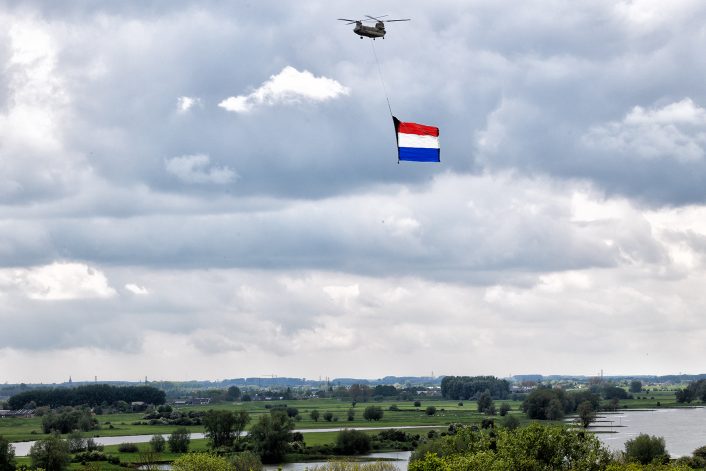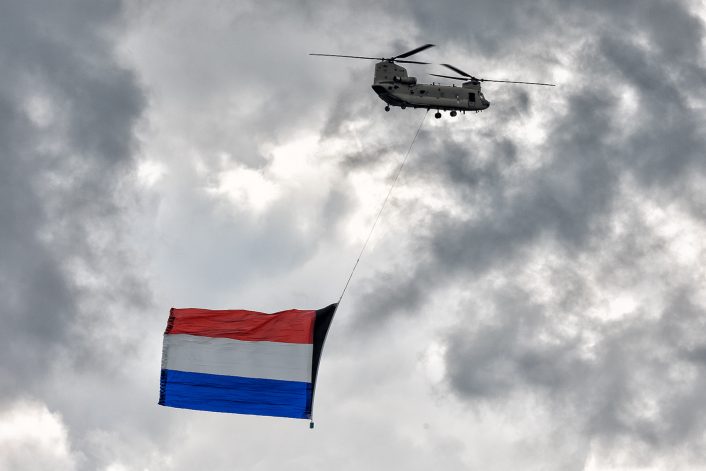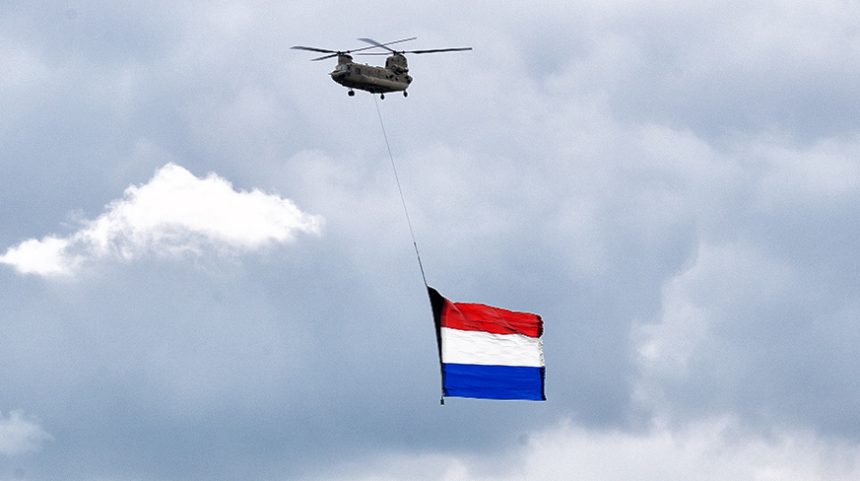We talked to the crew of ‘Kantoor Testvliegen’ (Test Flying Office Dutch Helicopter Commando) who flew the Flag Mission during the Dutch Liberation Day.
Liberation Day (Dutch: Bevrijdingsdag) is a national holiday in the Netherlands, celebrated on May 5, that commemorates the end of the Nazi occupation during World War II.
The liberation of the Netherlands involved a coalition of forces, including Canadian, British, American, Polish, Belgian, Dutch, Czechoslovak, and French troops. Canadian and British forces, alongside American and Polish airborne units, liberated parts of the country, particularly the southeast (Operation Market Garden), while French airborne troops were involved in Operation Amherst. On May 5, 1945, at Hotel de Wereld in Wageningen, Lieutenant-General Charles Foulkes of the I Canadian Corps and Generaloberst Johannes Blaskowitz, the commander-in-chief of German forces in the Netherlands, reached an agreement on the German capitulation. The formal surrender was signed the next day at Wageningen University.
Since the initial liberation in 1945, Liberation Day was commemorated every five years. In 1990, the day was established as an annual national holiday dedicated to remembering and celebrating liberation. Across the Netherlands, festivities are held with veterans’ parades and musical events to honor the sacrifices made and celebrate freedom.
This year, the celebrations included something new: a Chinook of the 298 Squadron of the Royal Netherlands Air Force flew a huge flag over Hotel de Wereld and Wageningen, the city where, traditionally, the Liberation Fire, the symbol of unity, peace and security, is set ablaze.
View this post on Instagram
Thanks to our contributor Marco Ferrageau, who also took the photographs that you can find in this post, we were able to ask a few questions to the ‘Kantoor Testvliegen’ (Test Flying Office Dutch Helicopter Commando) who flew the Flag Mission during the Dutch Liberation Day earlier this week.
Question: How did the idea of the flag under the Chinook come about?
Answer: During the preparations for 75 years of freedom in 2020 and the 75th anniversary of the 298 squadron, to further enhance both events, the idea of a flag under the Chinook arose.
After the first test flight, COVID came and the project could not be completed for a long time.
Q: How many test flights were carried out before May 5?
A: Three test flights were conducted. The first test flight was with a prototype flag of 9 x 6 meters. After this flight, various adjustments were made and the large flag of 20 x 13 m was produced. After the first test flight with the large flag, some improvements were made to the pick-up procedure. These were successfully tested during the last flight.
Q: Is it a one-off KTV ( Kantoor Test Vliegen , Test Flying Office ) project or will 298sqn continue with this and what are the future projects?
A: Determining the Underslung Load Clearance is a responsibility of BHL ( Helicopter Loads Office ) and KTV, with KTV conducting the flight test. When the tests were successfully completed, the ULC was drawn up and offered to 298sqn. So they can now fly the flag. At the moment, no further projects (related to the flag) are planned.
Q: What is the size and weight of the flag?
A: The flag is 20 meters long and 13 meters high. The weight of the flag (the cloth) is light, approximately 15 kg. The ballast weight makes up for the largest part of the total weight at 520kg. The load, including cables, weighs 615 kg.

Q: Are there additional obstacles with flying or hooking up?
A: Yes, when flying the flag you are not allowed to fly faster than 60 knots, which is quite slow for the Chinook. At speeds higher than 60 knots, the flag does not hang properly under the Chinook and excessive forces are placed on the flag, causing it to wear out more quickly.
A specific procedure has been devised for hooking up to make it as safe and effective as possible. Due to the downwash of the Chinook, it is not possible to place the flag loosely on the ground.
The flag is rolled up and tied with Velcro, and it is also held in place with sandbags. The helicopter will first fly upright above the flag and pull the flag up.
When the ballast weight comes off the ground, the MAOT (Mobile Air Operations Team) will pull off the Velcro with a special rope.
At the same time, the aircraft starts a forward flight so that the flag unfolds on the right side. The timing and coordination between ground and flying personnel is very important in the procedure.
A specific procedure is also required for landing the flag. The difficulty here is that there must always be a small forward speed so that the flag does not wrap around the ballast weight and becomes damaged.
In addition, one must descend faster than the forward speed to prevent the flag from dragging on the ground. The descent angle is therefore very sharp and that is very different from regular landings.










